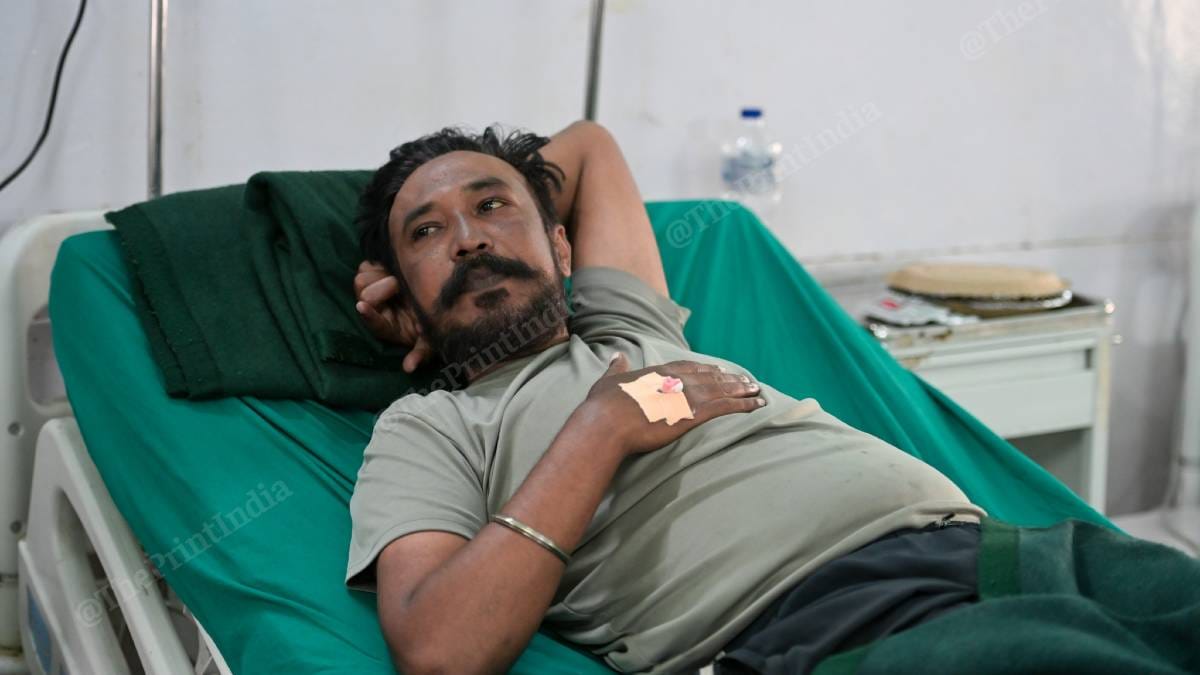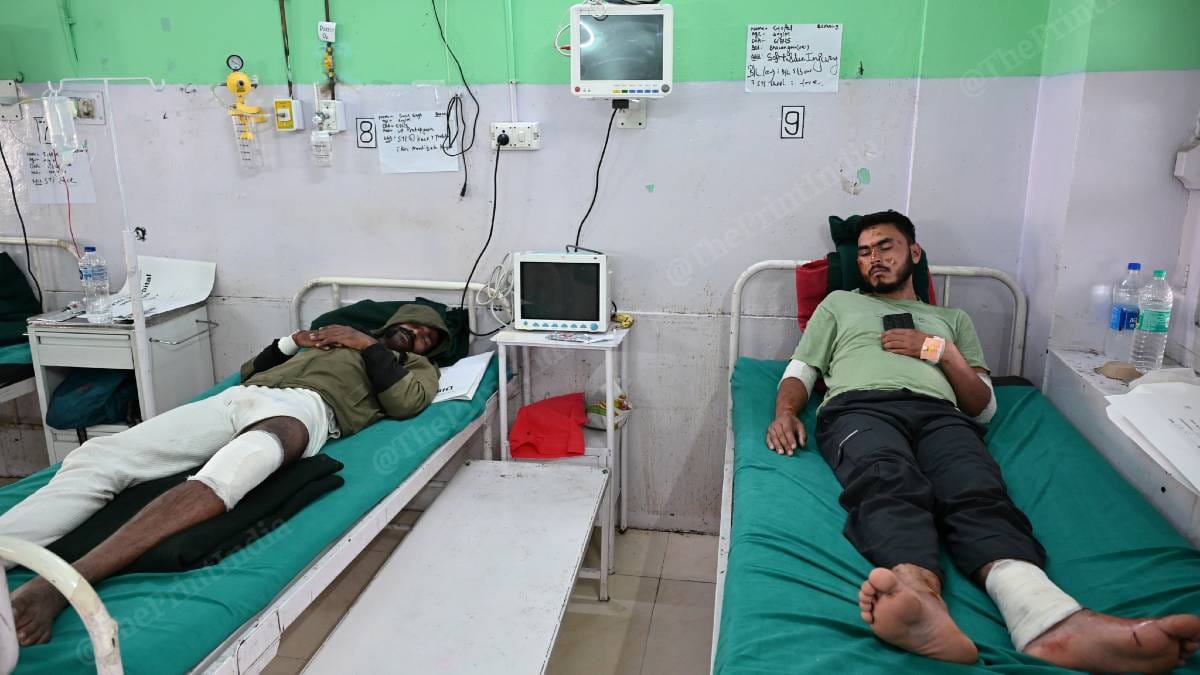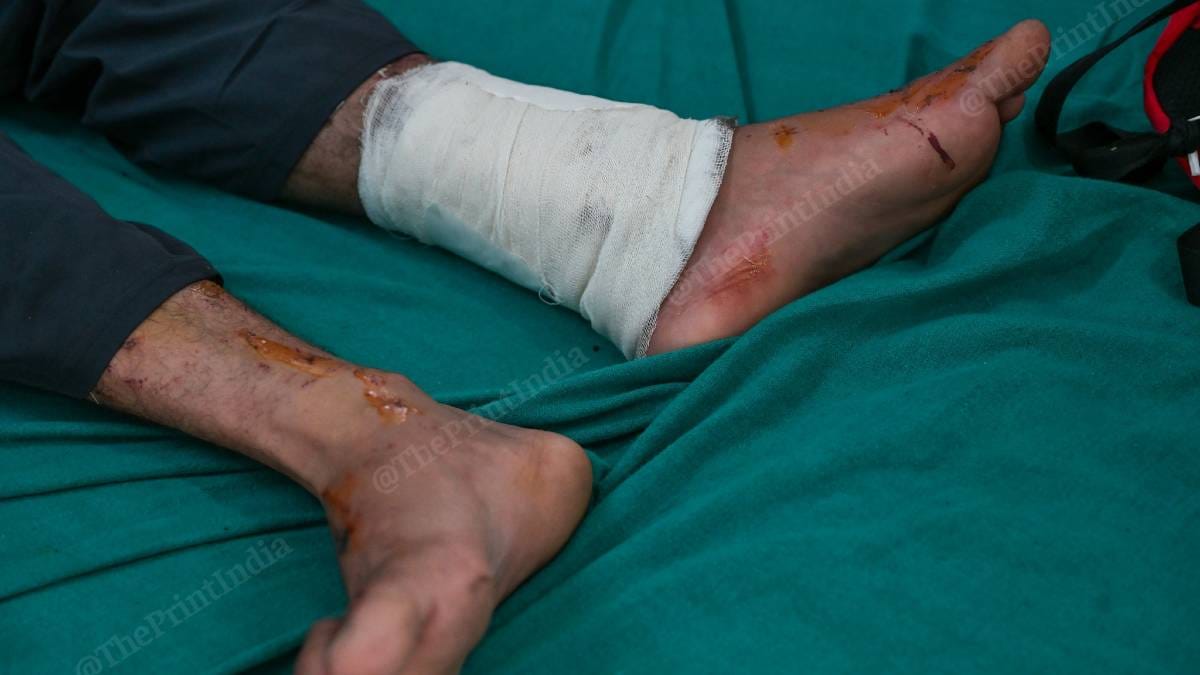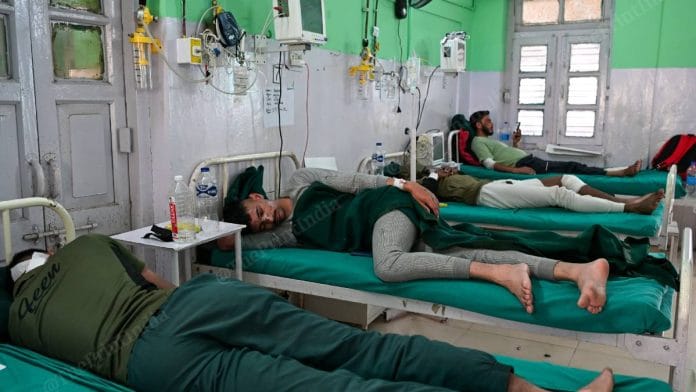Uttarkashi: At the district hospital in Uttarkashi, victims of the flash floods in Harsil were admitted Thursday with fractured arms and legs and soft tissue injuries. Most were from the Army camp in Harsil, near Dharali, and had been caught by the flood while preparing for rescue operations.
“It was like a dam had burst, the floods came suddenly,” 41-year-old Amardeep Singh from Amritsar, Punjab, who works as a supervisor for heavy machinery at the camp, told ThePrint. “Within 30 minutes, everything was destroyed.”
Six persons rested on beds in the orthopaedic ward of the hospital. All were from the Army camp, including four Agniveers. Only two were awake, Amardeep and Gopal, a local porter who worked at the camp.

When soldiers at the Harsil camp heard about the flash floods in Dharali, some 7 km away from their location, they had sprung into action. A group made their way there while others began preparations at the camp, according to Singh.
“The flood first came to Dharali between 12.30 pm and 1 pm. We saw the rescue team go there,” he said, adding that when the first rescue team came back, he personally took survivors out of the water, put them in army cars and ensured they got first aid.
“We were leaving the camp in Harsil for rescue operations and suddenly the flood came.”
When the flood hit the camp, Singh said he saw soldiers being swept away downstream. Some had returned from Dharali after rescuing people. Singh ended up fracturing his foot in the disaster.
“None of us thought we are putting our lives in danger. If we save even one life, we can go to the heavens without shame,” he said, with tears in his eyes.
Singh had arrived in Harsil just a month and a half ago, after his manager had won a contract to supply machinery services to the Army camp.
He swiped through pictures of the camp on his phone, smiling selfies of him at the camp restaurant wearing a bright yellow turban. His wife and three children live in Amritsar. It was only when he arrived at the hospital in Uttarkashi that he finally spoke to them, he said.
At first, Singh was treated at the medical inspection room at the Army camp before being air-lifted to Uttarkashi. He doesn’t know when he will be discharged but plans to go back to Harsil and continue work there.
“I wasn’t scared. I’m from Punjab after all–we don’t get scared,” he told ThePrint.
Diagonally across Singh’s bed, Gopal, an Uttarkashi local, was sitting upright with brown medicinal cream smeared across the cuts and bruises on his body. As a porter, Gopal did odd jobs around the camp, including cooking and delivery work.

“We were preparing to leave for Dharali. We had kept ropes and rescue equipment in the cars when the floods hit,” said Gopal, who was pulled by the waters and had to swim 250 meters to shore.
He was saved by Army personnel. “There are three camps: an upper, middle and lower camp. We were in the lower camp,” he said.
Gopal was also air-lifted to the district hospital Wednesday, where a team of eight medical professionals from Dehradun had flown in to oversee patients.
Dr R.S. Bisht, Additional Director of Medical Education at Government Doon Medical College, was part of the team taking care of the patients.
“The most common injury is around the foot, mainly fractures,” said Bisht, adding that from the 13 people rescued, 10 were from the Army and three were civilians. Eleven were admitted at the district hospital.

“Of the 11 people admitted here, three have been referred to other hospitals while one is in the ICU,” he told ThePrint.
Bisht also sits at the ITBP (Indo-Tibetan Border Police) Matli Hospital, which has a helipad and which too has been treating flood survivors.
“We were managing the same group earlier, but since the load was a bit less today, we have been working at Matli. There was one person who had a head injury whom we sent to AIIMS, Rishikesh,” he added.
Rescue operations have ramped up, according to Bisht. They are focused on rescuing the local population, mainly through airlifts.
“There are 11-12 helicopters and 1 Chinook engaged in relief efforts,” said Bisht, adding that the road blocks may take time to be cleared.
(Edited by Nida Fatima Siddiqui)






